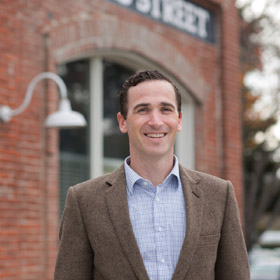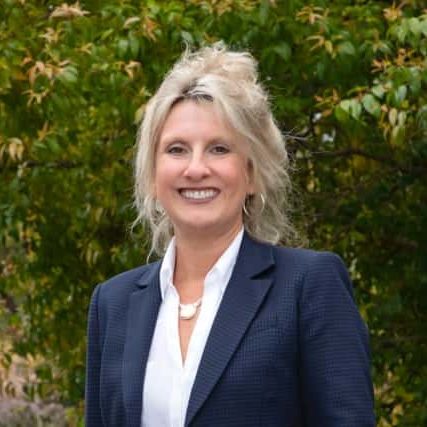Preserving agriculture and coastal areas is a top priority for North Bay leaders.
The natural beauty of the North Bay is pure poetry, inspiring artists and drawing tourists from around the world with its hushed redwood forests, lush rolling hills, rugged coastline and verdant vineyards. Preserving its beauty and farmland supports agriculture, the wine industry and tourism, keeping the economy and communities thriving for those living in the North Bay. But stewarding the land while supporting growth in our communities is a monumental task. Each North Bay county faces unique challenges when it comes to preserving the environment and conserving energy and water.
Here’s a look at how Marin, Napa and Sonoma counties are finding their balance.
Marin County
 Located across the Golden Gate Bridge from San Francisco, Marin County is well known for its natural beauty and affluence. Marin County’s natural sites include Muir Woods, the Marin Headlands, Stinson Beach, the Point Reyes National Seashore and Mount Tamalpais. Most of the land in the county (85 percent) is protected for agriculture and open space, meaning only 15 percent is developable—and most of that has already been developed, according to Tom Lai, assistant director of the Marin County Community Development Agency.
Located across the Golden Gate Bridge from San Francisco, Marin County is well known for its natural beauty and affluence. Marin County’s natural sites include Muir Woods, the Marin Headlands, Stinson Beach, the Point Reyes National Seashore and Mount Tamalpais. Most of the land in the county (85 percent) is protected for agriculture and open space, meaning only 15 percent is developable—and most of that has already been developed, according to Tom Lai, assistant director of the Marin County Community Development Agency.
“It’s rare to have a semi-rural county in the midst of a metropolitan area. Marin County is in San Francisco’s backyard, and it’s the recreational area for the entire Bay Area,” says Lai. Protecting the county’s beauty is a priority.
The scarcity of land for development makes it difficult for new businesses to set up shop in Marin. “Every business has a different take, depending on whether you’re a consulting firm, a hospital or a restaurant,” says Robert Eyler, Ph.D., a professor of economics and dean of extended and international education at Sonoma State University in Rohnert Park. “The cost of permits and affordable space are the two biggest things you sweat. Commercial space prices have gone up slowly in the last 12 months. Permitting fees take time and impact fees are large, not to mention labor costs, which have gone up and are sizeable. That’s the cost of doing business in Marin.”
Adds Lai, “Strict environmental regulations coupled with an engaged and passionate community create a challenging environment for developments.” Case in point: a Good Earth store in Tamalpais Valley opened earlier this year and was quickly sued by a housing activist for not complying with the California Environmental Quality Act (CEQA), according to an article in the Marin Independent Journal. (CEQA is a statewide statute of environmental protection passed in 1970.)
The activist contended the store would greatly increase traffic in the area. However, Marin Superior Court Judge Paul Haakenson eventually ruled the case in favor of the current owner; he determined the new store was exempt from CEQA since it was a remodel of an existing structure and was not adding any new floor space to the project site. According to Lai, this is just one example of the time and expense it can take to do business in Marin.
Traffic also adds to the problem when it comes to business. “Traffic congestion is a key constraint on development, making it difficult to develop in-fill sites,” says Lai. “The county has five traffic impact areas where fees are collected for new development, and those fees can add up to hundreds of thousands of dollars for new commercial development.”
What industries are welcomed to Marin? Says Lai, “The county supports agriculture, but unlike our neighbors to the north, we don’t have the climate for viticulture. Instead, most of the agricultural industry is based on grazing, and our farmers are venturing into value-added products such as organic milk, artisan cheese and grass-fed beef.”
About 10 years ago, the County of Marin relaxed its zoning laws to allow retail sales and processing facilities under a certain size to benefit from a streamlined permitting process. Nicasio Valley Cheese Company was one of the first businesses to take advantage of the relaxed zoning. Today, it produces organic, farmstead artisan cheese in Nicasio.
Other businesses encouraged in Marin include clean technology such as multi-media and digital arts. Health care also continues to expand in the county. Marin General Hospital is currently upgrading its facility in Greenbrae. Clean technology companies such as Autodesk in San Rafael, BioMarin and the Buck Institute for Research on Aging in Novato are also a major presence.
County zoning restrictions are complicated and can make it difficult for businesses, especially in the coastal zone, according to Lai. There are restrictions that protect coastal resources, such as streams and sensitive habitats, while limited public services and strict regulations make development in the coastal areas even more difficult. For example, only 5 percent of a farmer’s land can be developed, which means single family homes, barns or other facilities must be limited in size. Says Lai, “The goal is to prevent nonagricultural uses and developments that displace agriculture.”
The Marin Agricultural Land Trust (MALT) seeks to preserve farms by their buying development rights. “The land trust pays for a conservation easement on the property to prevent farmers from ever subdividing that property. It’s a model program that was the first of its type nationally,” Lai explains. “In addition, the state’s Williamson Act program offers farmers the opportunity to have their property taxes assessed at their agricultural value, thereby reducing their tax liability. These two programs work together to discourage conversion of Marin’s agricultural land.”
“The land trust pays for a conservation easement on the property to prevent farmers from ever subdividing that property. It’s a model program that was the first of its type nationally,” Lai explains. “In addition, the state’s Williamson Act program offers farmers the opportunity to have their property taxes assessed at their agricultural value, thereby reducing their tax liability. These two programs work together to discourage conversion of Marin’s agricultural land.”
The county offers permit assistance programs to help farmers and ranchers. An agricultural ombudsmen program offered through U.C. Agricultural Extension is available as an intermediary between a farmer and regulators, and the county also offers a similar service through the Resource Conservation District for permitting near streams and stream restoration projects. More recently, the county created a new planning services liaison position with the Community Development Agency to help applicants navigate the permitting process.
Marin is also committed to implementing its Climate Action Plan to reduce greenhouse gas emissions. One such program aims to reduce emissions from its workforce through RideGreen, a one-year pilot program, which was recently launched. Says Lai, “Since county government is the largest employer in the county, our goal is to reduce the number of county employees who drive alone to and from work by offering financial incentives toward alternative commutes such as carpools, public transit and the SMART train when that service opens early next year.” The new Sonoma-Marin Area Rail Transit (SMART) is expected to eliminate traffic congestion along the Highway 101 corridor for both Marin and Sonoma counties and significantly reduce greenhouse gases. (See “Ride SMART,” page XX.)
The goal is to shift about 500 employees (approximately one-quarter of the county’s workforce) away from commuting alone, which will reduce 342 metric tons of greenhouse gas (GHG) each year. The RideGreen program pays employees who carpool and matches employee pre-tax contributions toward the purchase of transit passes such as the discounted SMART EcoPass.
Sonoma County
 Sonoma Wine Country continues to serve as a lucrative draw, and tourism and hospitality remain a significant force behind the county’s economy. Though the financial crisis of 2007 to 2009 impacted the economy, it’s finally recovered from the setback, according to a report by the Sonoma County Economic Development Board (EDB) in partnership with the Sonoma County Workforce Investment Board (WIB) and Moody’s Analytics.
Sonoma Wine Country continues to serve as a lucrative draw, and tourism and hospitality remain a significant force behind the county’s economy. Though the financial crisis of 2007 to 2009 impacted the economy, it’s finally recovered from the setback, according to a report by the Sonoma County Economic Development Board (EDB) in partnership with the Sonoma County Workforce Investment Board (WIB) and Moody’s Analytics.
How did the economy get back on track? The Bay Area tech boom is bringing visitors to Sonoma County for weekend getaways and day trips. Says EDB Executive Director Ben Stone, “We now have a 76 percent hotel occupancy, the highest rate in the state.”
Nevertheless, there are challenges in bringing new business to the area. Says Brandon Jewell, director of economic and workforce development at the Santa Rosa Chamber of Commerce, “Our economy is growing, but available housing is a challenge.”
Sonoma County is home to tech companies such as Medtronic, Keysight Technologies and Viavi Solutions (formerly JDSU), but it’s also known for manufacturing food, craft beverages, beer and wine. Amy’s Kitchen, for example, is a leading frozen food brand sold in stores throughout the United States, Canada and abroad. Lagunitas Brewing Company in Petaluma is known for iconoclastic interpretations of traditional beer styles. Since 2014, it’s been ranked as the fifth top-selling craft brewery in the United States. And Russian River Brewing Company in Santa Rosa draws visitors from around the world for the annual release of its limited-run Pliny the Elder brew in February, adding $5 million to county coffers in 2016 alone.
While food and beverage manufacturing continues to thrive, it’s becoming increasingly difficult for these businesses to attract and retain employees in the area. Land is limited, says Jewell, and the pace of new housing construction has been slow since the recession. Couple that with unemployment near 4 percent, and companies are forced to recruit job candidates from other parts of the country.
Says Stone, “One of the keys issues facing local employers is attracting and retaining top employee talent in specialized and high-demand professions. By working with local human resource directors, commercial real estate brokers, city economic development and county workforce professionals, the EDB developed a website to promote Sonoma County and its cities as a great place to live, work and do business.
“Sonoma County Connections is a go-to resource for those trying to attract valuable employee talent to the region; access information on local job fairs, employee training and hiring incentives; and support regional business expansion and relocation efforts.” Recently, workforce efforts have focused strongly on building pathways through the schools that will lead into available jobs in local companies. The Sonoma County Office of Education (SCOE), and the Career Technical Education (CTE) Foundation direct this effort.
Additionally, Sonoma County offers a full spectrum of services to encourage business growth. The EDB staff brings together the resources, services, connections and information to move local businesses forward. Staff can help with business startup, assist with permits and regulations, and help recruit and train valuable employee talent. It provides the latest economic data on local trends and helps businesses stay and grow in Sonoma County. There are other resources for starting and expanding existing businesses through local chambers of commerce, trade organizations and utility companies.
While the cost of living and doing business is high in Sonoma County compared to other regions of the United States, it’s still considerably lower than nearby San Francisco and Silicon Valley, and this difference continues to drive population growth. Says Stone, “We still have some of the most affordable housing in the Bay Area. It’s not cheap, but it’s still the best deal when you consider the quality of life, employment opportunities and our rural setting and beaches.”
“We want to make sure we maintain a healthy balance between keeping the natural beauty and giving businesses the ability to grow and expand,” adds Brandon Jewell, director of Economic Workforce and Workforce Development at the Santa Rosa Chamber of Commerce.
To keep Sonoma County green and clean, county government offers the Green Business Program, a partnership of government agencies and utilities, which focuses on small- to medium-sized, consumer-oriented businesses that choose to operate in a more environmentally responsible way. To be certified, participating businesses must be in compliance with all environmental regulations and meet program standards for conserving resources, preventing pollution and minimizing waste. Businesses that receive green certification buy recycled paper and print and copy double-sided; clean with less toxic products; use efficient lighting systems; encourage employees to walk, bike or take public transportation; and conserve water with high-efficiency toilets and faucet aerators, among many measures.
Meanwhile, what’s most unique about Sonoma County is its spirit of collaboration. Says Jewell, “What stands out strongly is our collaborative industries. I’ve seen amazing progress when companies come together to discuss challenges, share best practices and learn from one another.”
The Santa Rosa Chamber of Commerce and Sonoma County BEST, for example, started the North Bay Food Industry Group, known as FIG, and the Technology Industry Group, known as TIG. “Those that participate in the industry groups understand that collaboration trumps any competition and that there’s always something to learn from others within the industry,” says Jewell. “The collaborative mindset is one of the traits that makes our North Bay business community unique. Not only does this help individual businesses succeed, but it supports the growth of an entire industry, making us a hotspot for growth—which, in turn, makes us a competitive region for new businesses.”
Companies are also working together to resolve high energy costs to keep business in Sonoma County. In 2012, the EDB initiated a Business Retention Program, spearheaded by Tim Ricard, that’s focused on increasing engagement with businesses leaders to identify and solve the key issues they face and find ways to help them stay and grow in Sonoma County. In 2014, a collaborative effort between Pacific Gas and Electric Company (PG&E), the EDB and Empire West Inc., kept 30 local jobs in the county.
Graton-based Empire West, a manufacturer of Ceilume brand ceiling tiles, was struggling with high overhead costs, particularly electricity, and facing increasing competition from manufacturers in China, India and Central Europe. As a result, when other states and regions came courting with hopes the company would move, owners considered relocating. Empire West became the first Sonoma County business to qualify for a reduced economic development rate, enabling it to stay local. The PG&E economic development rate program provides a 12 percent rate reduction over a five-year period and makes it possible for employers to keep, expand or launch new operations within California.
Neico Corporation, a Windsor manufacturer of flame broilers for the fast-food industry, is another company that took advantage of local assistance and state incentives to stay in the county. Nieco provides 76 jobs and generates more than $30 million in annual revenues from the Windsor site and was faced with a possible out-of-state consolidation into an Illinois facility owned by its parent company, The Middleby Corporation. Earlier this year, Nieco partnered with EDB to take advantage of PG&E’s economic development rate program for a significant reduction, and the state’s Cal Competes Tax Credit provides a $550,000 income tax credit. In return, Nieco commits to remaining in Sonoma County, adding 19 positions to its workforce over the next five years and investing an additional $3.9 million into its business operations.
In the future, the county hopes to work with international trade agencies to help grow the demand from East Asian economies, as a means to help boost the medical device and wine industries. The county is also courting technology-producing industries to the area to take advantage of its skilled labor force.
Napa County
Napa County’s economy revolves around agriculture, particularly wine, and tourism, according to Morrison, but there’s a lot of diversity within each of those industries, including small family-owned businesses, large corporations, businesses that favor production and others that focus more on retail. The cost of doing business depends, in part, on what kind of business you’re bringing to the county.
“It can be difficult for a small business to establish itself. Generally, urban development belongs in the city—we don’t want sprawl. As for wineries, it depends on your vision, plan and location,” he says. “There are more challenges for a 100,000-gallon winery than for a 5,000-gallon winery. There are more challenges if you’re located in the hills than for a winery on the valley floor, and there are more challenges if your winery is proposed on the property line, next to your neighbor’s house, compared to a winery in the middle of a 100-acre parcel.”
What are the challenges of starting a vineyard and winery? Says Morrison, “It’s a good idea to know what you want to accomplish. Some people are passionate about wanting to make wine, but they haven’t fully thought through their business plan. Hiring the right people to advise you is critical: You may need an engineer or architect, a vineyard manager, winemaker and a winery plant manager to help you fully realize your operation. A planning consultant can help to check on water, traffic, noise archeology, biology and other potential regulatory obstacles. Many applicants also hire an attorney to review existing entitlements and to develop strategies for negotiating the county’s complex winery regulations. A lot of issues that become controversial can be more easily addressed in the early stages if you have help.”
How does Napa compare with other parts of the state? In some regions, the environmental process involves minimal review, says Morrison. “Putting up a 30-story skyscraper in San Francisco or Sacramento is fine, but it would be a blight in Napa,” he says. “Napa is more difficult to get approval than in Solano County, but not as difficult as Marin, San Francisco or Santa Clara counties. On issues such as planting new vineyards on hillsides, Napa is very strict. We have more requirements regarding wineries and vineyards than other wine regions such as San Luis Obispo, Santa Barbara and Monterey counties.
In recent years, Napa County tried to encourage biotech organizations to move into the area. But, says Morrison, “Napa is out of the way for biotech firms. We’re not on Highway 101 or the I-80 corridor, and our housing prices are higher than surrounding areas for employees,” he says. “Instead, we’ve seen a change in the wine industry. Functions that aren’t directly related to production or tasting, such as sales, office staff and storage, are moving support services from the north valley to less expensive areas in the south county.”
As far as environmental concerns, says Morrison, “We live in California. We have an enormous amount of regulation.” And while the U.S. government has regulations in place for clean air, water, endangered species and more, California has adopted its own state regulations, which are often more strict.
In 2014, California enacted landmark legislation known as the Sustainable Groundwater Management Act (SGMA), intended to ensure a reliable water supply for years to come. “Napa is forward thinking when it comes to stewardship. Without groundwater, there’s no agriculture. That’s a critical issue for us¾to direct urban uses to surface water and to recycle wastewater whenever feasible, ” says Morrison. “Most cities in Napa are on surface water, which helps ensure the long-term viability of our aquifer, which, in turn, ensures the survival of agriculture.”
Agriculture continues to be protected through Measure P, an initiative that passed in 2008. Through this measure, the zoning designation of agricultural lands can’t change without a public vote. For example, if the county wanted to consider rezoning farmland for a new subdivision or shopping center, the decision would have to go to a countywide election so that Napa residents could vote on it. According to Morrison, this requirement is fairly unique to Napa County. “The public most vote to approve before the county can develop protected farmland [for a non-agricultural use].”
Says Morrison, “Environmental safeguards help steer businesses into directions that complement their interests to ensure long-term growth. It’s part of responsible business—overusing groundwater is bad for everyone, and polluting a stream isn’t in anyone’s interest.”
Asked about transportation and infrastructure challenges, Morrison answers, “Traffic, housing and water are our greatest concerns for residents and businesses. Napa is in its sixth year of drought. We’re still conserving water, but the groundwater supply isn’t evenly distributed. There’s plenty [of water] on the valley floor, but locating groundwater in the hills can be challenging.”
Traffic is equally challenging since many employees commute into Napa for work, he continues. “We have a labor-intensive economy, and 30 percent of the people who work here commute in,” says Morrison. “Napa is on the low end in terms of housing prices in the San Francisco Bay Area, but it’s still more expensive than Sonoma, Solano, Yolo and Lake counties. This creates traffic, as people live in more affordable outlying areas and commute to work here.”
“The state expects Napa County [including the five cities] to add 20,000 people in the next 25 years,” says David Morrison, director of planning, building and environmental services at the county of Napa. “We want to be home to more people in the future, but we need to grow in a way that preserves agriculture and our vast oak forests and limited water resources. Our work today is to continue the balance between agriculture, environment and community into the future.”
Morrison believes providing more local affordable housing could alleviate traffic problems, and it’s a problem the county continues to address. “There’s a strong emphasis on preserving the beauty of our natural landscape, so there’s no interest in building four-lane roads and highways,” he says. However, the county is currently converting a county campus, an 8.6-acre site once occupied by health and human operations, into a private housing project. The county is also converting an old steel plant into a development for up to 900 homes. “We preserve agriculture, so we’re looking to reuse existing urban in-fill sites to build affordable housing.”
As for traffic, Napa is finding creative ways to move people around. The Napa Valley Vine Trail Coalition is currently building a 47-mile walking and bike trail to connect the valley from Vallejo to Calistoga. What’s more, using the Napa Valley Wine Train to get people to work is under consideration as well as partnering with the private sector to provide a ride share program.
On the horizon
What’s on the horizon as North Bay leaders continue to juggle environmental concerns and growth?
Says Eyler, “I hope we focus on where we want to be five to 10 years from now. Marin is an amazing place to live that is growing jobs that are scientifically based, but it’s tricky to develop [housing and commercial space] so many commute in for work. Napa is heavily centered on wine, tourism and food. Sonoma County is more bucolic and has more diversity, but it’s a mixed landscape. There’s coastline, agriculture, wine and tourism alongside science and technology. Everything in Sonoma County is bigger and offers a corridor going through the middle that’s commercially based.
“These are the tensions in the three counties,” he continues. “The future of these counties is tied together through housing, commuting and labor markets. That will never change, so we have to plan together as a region. There’s a common fate on the other side.”
Trending
By Judith M. Wilson

Co-working spaces give people who work independently a place to come together, share resources and give each other support. It’s a trend in the North Bay that includes the Hivery, a self-described inspiration lab for women in Mill Valley, Santa Rosa Share Space and Sebastopol Entrepreneurs Project. Venture Pad is set to open in San Rafael in 2017. “Hub models are the way of the future,” says Miriam Hope Karell of the Marin Small Business Development Center. “We live in a networked world, and this is an opportunity to for local businesses owners to grow through in-person connections and collaboration.”
Know What’s Allowed
By Bonnie Durrance
David Morrison, director of planning, building and environmental services for the county of Napa, suggests prospective new winery owners (and those considering expansion) to think carefully about how they’ll secure sufficient water, determine whether public road and driveway improvements are needed, address energy conservation and sustainability, minimize visual and noise impacts to neighboring properties, provide wastewater treatment and manage storm water.
“[These businesses should] be very deliberate in looking at what they want to do—all the aspects of the operation,” says Morrison. “Things that the owner may think are unimportant may be critical to ensure compliance with local and state requirements. Once the applicant has a pretty good picture of what it is they want to accomplish, then county staff can start to figure out how that project can be fit into the county’s requirements.” The county offers pre-applications meetings, for a fee, to help guide people through the permitting process, which can be complex.
Additional review is always necessary for projects located within an environmentally sensitive zone, he adds. “If you’re in an area where’s there’s a special status species that only blooms in the spring, you might want to think about hiring a biologist during the fall or winter,” he advises. “Or if you’re in an archeologically sensitive area, you might want to think about having somebody go out and check to see if there is a potential for cultural resources.”
It’s better to conduct studies in advance and incorporate the findings into your proposal than to have the county discover it and delay processing your application because it’s incomplete, Morrison explains. “For instance, in 2013, Governor Brown signed an executive order that led to rules being adopted requiring all pre-1994 homes to install low-flow water fixtures by 2017. And if you don’t, you have to disclose any noncomplying fixtures to future buyers.”
In California, the rules are changing continually, not only from the Governor’s office or the Legislature, but also through regulatory agencies. “The building code changes every three years, and supplements are regularly issued during the interim. Every year, the governor and legislature pass hundreds of new bills that have to be reviewed to see how they affect the process, as well as propositions passed by the public. There are also new regulations coming from agencies such as the Regional Water Quality Board, Bay Area Air Quality Management District, CalFire and the Federal Emergency Management Agency. Finally, there are the courts: If they make a new land use decision regarding CEQA, property rights or an interpretation of code, it affects how we do our business. So it’s a very fluid environment.”





